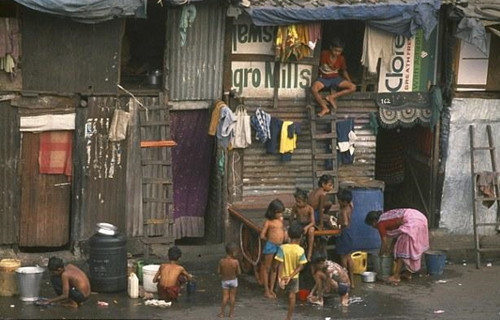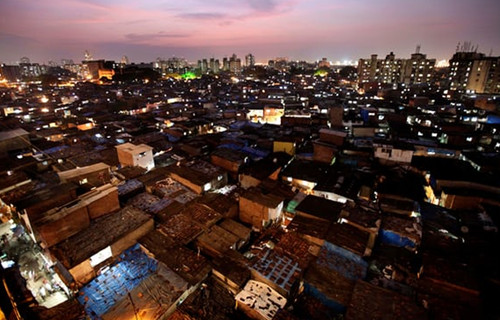印度孟买为游客提供贫民窟住宿体验,这种项目到底有没有意义呢?你愿意去吗?

Tourists are being offered a night’s stay in a Mumbai slum to experience the “reality” of life in India’s financial capital, including using a public toilet shared by more than 50 other families.
游客可以在印度的金融中心孟买的贫民窟里体验一晚上的“真实”生活,包括使用一个由50多个家庭共享的公共厕所。

The scheme is being run by David Bijl, 32, a Dutch citizen who works for a Mumbai NGO in conjunction with a local resident, Ravi Sansi. He argues that slums are “part of the reality of Mumbai – not the only part, but a part” and anyone who wishes to understand the inequalities of the city needs to understand slum life. Other tours of Mumbai slums, he said, can often be “superficial”.
该计划由32岁的荷兰公民戴维.比吉(David Bijl) 与当地居民拉维.桑西(Ravi Sansi)一起管理。戴维在孟买一家非政府组织工作,他认为贫民窟是“孟买真实生活的一部分——不是唯一的部分,而是一部分”, 任何想要了解这座城市的不平等问题的人都需要了解贫民窟的生活。他认为,以其他方式游览孟买贫民窟往往是“肤浅的”。
“Visitors come in, take a few snapshots for their Facebook page and go off without really understanding anything,” he said. “I have worked in many slums and I know there is a positive impact for both sides when an outsider takes an interest in slum dwellers’ lives and how they cope by connecting with them.”
他说,“游客们进来,拍几张照片晒到他们的脸谱主页上,没有真正理解任何东西就离开了”。 “我曾在许多贫民窟工作过,我知道,当一个局外人对贫民窟居民生活感兴趣并与他们产生连接时,这对双方都有积极的影响。”
Sansi’s family home will be available for tourists to stay in. It includes a new “loft” which has been equipped with a flatscreen television, an air conditioner and a new mattress – all of which are considered luxuries for the majority of residents.
桑西的家就是其中一个“旅馆”,他的家里有一个新“阁楼”,里面配备了平板电视、空调和新的床垫——这些物品在大部分贫民窟居民眼中都是奢侈品。
Bijl says the entire 2,000 rupee rate for one night’s stay will go to the host family. “I am already getting a lot of interest from [other] slum families who want to invite guests to stay,” he said.
比吉说,贫民窟一晚上的住宿费是2000卢比(约合人民币199元),这笔钱全部交给提供住宿的家庭。他说,“我已经从那些希望邀请客人入住的贫民窟家庭获得很多好处。”
Around 60% of Mumbai’s 20 million residents live in slums, giving rise to the city’s moniker “Slumbai”. Housing is scarce and so expensive that even the wealthiest residents grumble over rents and purchase prices.
在孟买的2000万居民里,大约有60%的人住在贫民窟,使得这座城市有了一个绰号“Slumbai”。这儿的房屋稀缺且昂贵,即便是最富有的居民,都对租金和房价有怨言。
Tours of Mumbai’s slums are not new, but remain controversial. Supporters say they offer a window into the true nature of poverty, arguing that both sides benefit from the interaction, particularly if the proceeds go to residents.
参观孟买的贫民窟并非新鲜事,但是一直存在争议。支持者认为,这为观察贫穷的真正本质提供了一扇窗口,而且双方都能从此类互动中获益,特别是在收入流向贫民窟居民的情况下。
But critics decry what they see as “poverty tourism”, which they claim is exploitative and demeaning.
批评者们则谴责说这是在“消费贫穷”,他们声称这是一种剥削和贬低。
Asim Shaikh, manager of Reality Tours and Travels, has been taking foreign tourists into Mumbai’s Dharavi slum, which sprawls over more than 160 hectares, for the past 11 years. He claims the trips are “a way to dispel the negative image of life in the slums as dirty and crime-infested, and of seeing normal people going about their lives”.
旅游公司Reality Tours and Travels的经理阿希姆.谢赫在过去11年里一直带游客参观孟买的达哈维贫民窟,这片贫民窟总面积绵延达160多公顷。他声称,贫民窟之旅是“消除贫民窟生活脏乱差、犯罪猖獗等负面形象,以及观察贫民窟的普通人家如何生活的一种方式。”
“It also shows how slum-dwellers manage diversity – Indians of every faith and every corner of the country live in Dharavi,’ said Shaikh.
“这也显示了贫民窟居民如何对待多样性——达哈维的居民来自印度各地,信仰也是多样化的”,他说道。
However, Jockin Arputham, president of the advocacy group Slum Dwellers International, criticised the plans.
不过,“贫民窟国际”(Slum Dwellers International)组织的总裁约金.阿普塔姆(Jockin Arputham)对这些形式提出了批评。
“These tours are meaningless and a stay for a night will be meaningless. These are not objects in a museum or animals in a zoo. It is a community, real people living their lives. Staying the night helps neither the visitor nor the family,” he said.
他说,“这些旅游是毫无意义的,在这里住上一晚并没有任何作用。它们既不是博物馆里陈列的物品,也不是动物园里的动物。它是一个社区,真实的人在这里过着自己的生活。住上一晚既不能帮助游客,也不能帮助这些家庭。”







